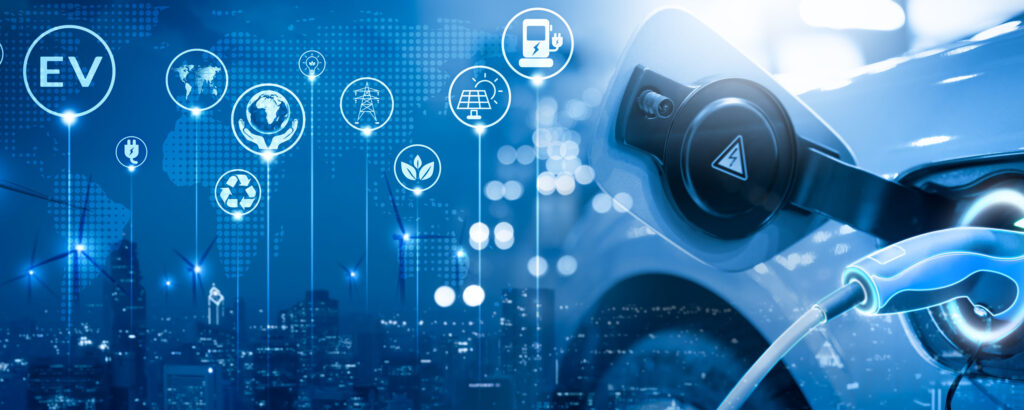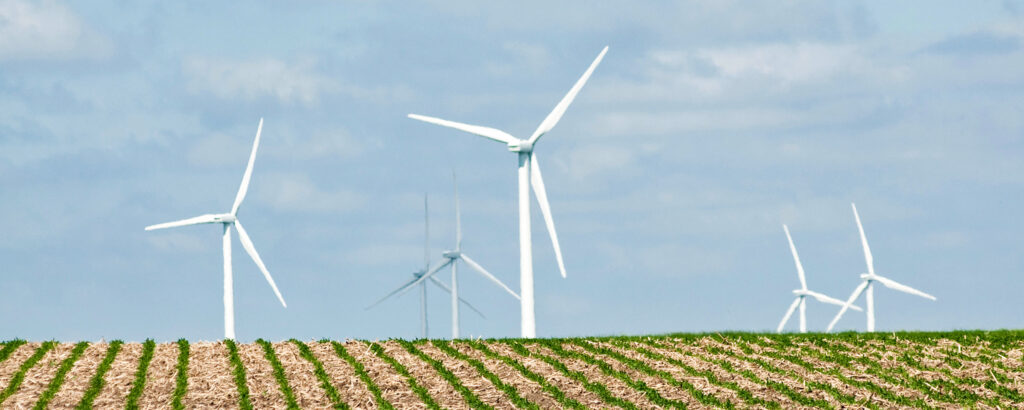EPRI modeling evaluates potential decarbonization strategies for Minnesota
At the beginning of 2023, Minnesota passed legislation requiring the state’s utilities to use 100 percent carbon-free electricity by 2040. With the law’s passage, Minnesota joined many other states—including California, Nevada, and New York—that have put decarbonizing the electric sector at the center of their strategies to reduce greenhouse gas emissions. The law also raised many practical questions about how utilities will reach the mandates and elevated the importance of fully grasping potential impacts on costs, technology options, and possible effects on sectors beyond the electric power industry.
Before Minnesota’s new legislation became law, EPRI collaborated with Minnesota utility Great River Energy (GRE) to model and analyze potential energy system transitions under different decarbonization pathways, including a zero-emitting electric power sector, in 2040. “When we started the project, the policy landscape in Minnesota was uncertain,” said Steven Rose, a principal research economist at EPRI whose work focuses on long-term modeling of socioeconomic systems and climate change impacts. “It was clear that some sort of more aggressive renewables policy was likely, but beyond that was unknown.” However, even before the law passed, GRE was already on a trajectory to reduce carbon dioxide emissions by 80 percent by 2030.
One of the three policy scenarios modeled in the report, Opportunities for Decarbonizing Minnesota’s Economy: Energy System Supply and Demand Assessment, was full decarbonization of the state electric sector by 2040. The other two policies modeled were an 80 percent economy-wide reduction in emissions by 2050 and an increase in renewables to 50 percent by 2050.
EPRI also worked with GRE on a Minnesota Efficient Electrification Study to evaluate the potential deployment of electric technologies in the state’s buildings, transportation, and industrial sectors. The analysis was built on years of effort by GRE to educate the cooperative’s members about the potential benefits of electric vehicles (EVs), including buses and forklifts, as well as air source heat pumps.
“What we found was that air source heat pumps can significantly reduce the consumption of propane in homes and enhance the economic benefits of the technology while reducing exposure to price volatility during peak demand periods,” said Jeffrey Haase, GRE’s director of member services and end use strategy. “One of the reasons we participated in the assessments was to inform our strategic priorities and evaluate the long-term impacts to the grid and our load curve.”
For example, Haase said that one area of interest for GRE was expanding flexible load capabilities. “How do we continue to build on our legacy of load management capabilities and expand load flexibility as we see increased adoption of electric technologies such as electric vehicles and heat pumps?” Haase said. “Within the energy system modeling, we see some load dynamics as we shift into electric space heating coupled with electric transportation that could lead to significant increases in peak demand in the winter in our area. What types of programs can we develop to preserve or enhance flexibility?”
Both the electrification study and the policy scenario modeling may have an impact on utility planning. Zac Ruzycki, the director of resource planning for GRE, describes the work his group does as mainly focused on a period of five to 20 years in the future, including planning for generation assets and forecasting load, to renewable energy acquisitions and contracting.
Assessments of potential load growth, seasonal changes to peak demand, and load shape obviously have a big impact on planning. “This is a great first step to have the conversation about what you need for this big electrification buildout,” Ruzycki said. “These are new challenges we are facing, and this type of analysis will be important to ensure we have the right resources to meet our policy and portfolio goals.”
Findings from the electrification study reinforce both the importance of planning and some of the uncertainties. For example, there is high potential for the electrification of light-duty vehicles, although the timing and speed of EV adoption is unclear and depends on numerous factors. Similar potential and unknowns surround medium and heavy-duty EVs, which are currently in their infancy but could develop fast.
Non-road transportation equipment is currently viable for many customers in Minnesota, and many new technologies are being developed. “We are comfortable modeling residential electric vehicle uptake scenarios,” Ruzycki said. “However, there is still much uncertainty in understanding how fleet electrification and the trucking industry can change demand and energy forecasts amongst our member-owners. We need to understand these areas of study more as they hold the potential for significant demand increases.”
Modeling the Impact of Policy Choices
To evaluate the potential decarbonization, electrification, and economic impacts of the three different policies, EPRI utilized a version of its U.S. Regional Economy, Greenhouse Gas, and Energy (US-REGEN) model. The US-REGEN model provides insights into how various policies and regulations, market dynamics, and technology innovations can affect and shape energy industry fundamentals, including greenhouse gas emissions, investments in low-carbon electricity resources, and the price of electricity.
EPRI used US-REGEN to conduct the 2018 U.S. National Electrification Assessment. It has since applied the model to analyze electrification uncertainty and opportunities in Georgia, Alabama, New York, California, and Pennsylvania and recently to help evaluate decarbonization opportunities and risks in Wisconsin. It’s important to note that the findings of the modeling aren’t forecasts or predictions. Instead, the modeling allows for exploring a wide range of decarbonization transitions. This includes evaluating how different potential policies and other conditions affect energy systems, economic and environmental outcomes, such as natural gas and EV battery prices, and the permissibility of low-carbon electricity imports from nearby states.
The modeling and findings from the Minnesota study are particularly relevant now that the state has established a new carbon-free standard. Some of the main takeaways from the analysis could inform a more impactful and cost-effective implementation. Supporters of the new law have clarified that decarbonization to address the negative impacts of climate change is the legislation’s primary objective.
In that regard, EPRI’s modeling indicates that a policy to decarbonize the Minnesota electric sector could result in more statewide emissions reductions than would be achieved by increasing renewables by 50 percent by 2050, which was another policy EPRI modeled. Nevertheless, the modeling also compared emissions reductions from electric sector decarbonization and those associated with a policy of 80 percent Minnesota economy-wide CO2 reduction. The result is that the 80 percent Minnesota economy-wide CO2 reduction policy had deeper emissions reductions than electric sector decarbonization.
Potential Cost Implications
The modeling also evaluated potential policy choices that could affect electricity prices and environmental outcomes, as well as the cost-effectiveness of the carbon-free electric sector policy. One potential impact of independently decarbonizing Minnesota’s electricity is an increase in customer costs. According to the U.S. Energy Information Administration, Minnesota’s residential customers pay an average of just over 14 cents per kilowatt hour, below the U.S. average of 15.6 cents. A policy that requires all electric generation in Minnesota to be carbon-free by 2040 can have the potential to put upward pressure on electricity prices.
“When emissions reduction requirements are applied to the electric sector, the price of electricity increases because it is more expensive to produce electricity,” Rose said. When prices for anything go up, consumers tend to adjust their behavior. In EPRI’s analysis, that’s exactly what happened, with customers substituting away from electricity in favor of other, more affordable fuels. The result: While electric sector emissions may be eliminated, the potential for customers to use more fossil fuels for heating, transportation, and other end uses could mean an increase in emissions in other sectors of the Minnesota economy.
The Importance of a Holistic Approach
The modeling also highlighted how a more holistic policy that included incentives for customers to use decarbonized electricity could avoid fuel switching and the higher emissions that accompany it.
EPRI’s modeling of an economy-wide Minnesota decarbonization policy found a significant increase in the use of low-carbon electricity, not a decrease. “That was the cost-effective way to decarbonize the entire economy,” Rose said. “That result, however, depended on the availability of incentives to reduce and avoid emissions in the rest of the economy.”
There are myriad ways to incentivize greater use of carbon-free electricity for transportation, heating and cooling, manufacturing, and other end uses. One approach is to adopt policies that directly or indirectly price emissions from those activities. Yet another is to constrain those emissions. And yet another is to facilitate the adoption of electric technologies like EVs, heat pumps, and electric forklifts.
The mix of incentives can vary, but the main point is to disincentivize emissions and facilitate consumers’ identification of the lowest-cost emissions reduction strategies for society—which is challenging when policies only decarbonize the electric sector. This is especially true now that Minnesota’s transportation emissions are greater than those in the electric sector. “There’s a tendency to try to decarbonize the electric sector first,” Rose said. “Doing that without providing the incentives to use more expensive low-carbon electricity will make it harder on end use customers who may simply be confronted with higher electricity prices.”
Policy Details Can Have a Big Impact
Past EPRI research has also demonstrated the potential unintended impacts of policies focusing on electric sector decarbonization alone. For example, EPRI examined the possible effects of a regional approach to electric sector decarbonization. Like the Minnesota modeling, the analysis found that higher-priced carbon-free electricity could raise emissions in other parts of the economy and result in higher emissions inside and outside the region. “Because of the interactions of power markets with the rest of the economy and between regions, we found emissions leakage inside and outside of the region where we implemented an electric sector emissions policy,” Rose said. “The recent Minnesota analysis, and the earlier study, highlight the policy coordination challenges and the importance of developing holistic policies.”
The Minnesota modeling also highlighted the importance of the specific details of electric sector decarbonization policies. For example, the type of generation technologies allowed to meet capacity reserve requirements can significantly impact costs. In the Minnesota analysis, for instance, allowing gas turbines to satisfy capacity reserves was found to be cheaper than completely prohibiting any capacity that produces greenhouse gas emissions. “If you take away the capacity reserve opportunity for emitting resources, like a gas turbine, complying with the policy could be significantly more expensive for utilities and customers,” Rose said. “It is certainly worth considering letting gas turbines be available as reserves. They would not be used often, the emissions would be modest, and they could help substantially with managing the costs of a low-carbon transition.”
Another factor that could have a meaningful impact on the price of electricity and policy costs under a zero-carbon electric sector policy is whether the policy allows carbon-free electricity to be imported from outside the state. The modeling indicates lower electricity prices and policy costs in Minnesota when imports are allowed.
Grappling with Uncertainty
Though the modeling provides insights into potential cost impacts and emissions reductions for different policies, it also demonstrates how much uncertainty there is in the future evolution of Minnesota’s energy system, even with the new policy. A big uncertainty for Minnesota utilities is what will happen next regarding climate policy. Will other policies incentivize decarbonization in the rest of the state’s economy and facilitate the cost-effective use of low-carbon electricity? What sectors will be targeted, when, and what will the incentives look like?
Other factors also contribute to uncertainty, including the future trajectory of natural gas and EV battery prices. For example, when higher future gas prices are modeled under the decarbonized electric sector policy scenario, the use of gas decreases, and generation from wind, solar, and nuclear power increases. Higher battery costs, by contrast, lead to significantly lower load and slower growth in capacity additions and generation.
In other words, the power system could change in dramatically different ways under equally plausible scenarios. “From a planning point of view, that’s real uncertainty,” Rose said. “Utilities are being told to do things, but it is not absolutely clear how the future will unfold, and utilities need to account for that.” This becomes a risk management problem for utilities. “These uncertainties represent a real risk for decisions now for current assets and potential new investments,” according to Rose.
In response to that uncertainty, EPRI has since initiated other projects aimed at helping utilities like Duke, Entergy, Ameren, Alliant, and WEC Energy Group develop tools to assess and manage climate-related risks, including low-carbon transition risk. This involves identifying the conditions associated with higher and lower-risk outcomes. “In the case of Minnesota, end use decarbonization policies that provide incentives for using low-carbon electricity, as well allowing the use of gas turbines for capacity reserves, are examples of policy design choices associated with a less risky outcome,” Rose said. Risk assessment and management also involve identifying elements of the transition to decarbonized energy that are robust and occur in all plausible futures, such as a minimum level of wind and solar generation additions.
The risky conditions represent opportunities for action. “We can identify what can be done to facilitate less risky and more cost-effective outcomes for society. That could be research and development (R&D). It could be conversations with stakeholders regarding enabling policy conditions or collaborations with customers to coordinate strategies,” Rose said. “Internally, the analysis insights become information that helps inform planning decisions. There are other important criteria like reliability that will, of course, also have to be considered, but the modeling helps evaluate and address transition uncertainty.”
EPRI Technical Expert:
Steve Rose
For more information, contact techexpert@eprijournal.com.




